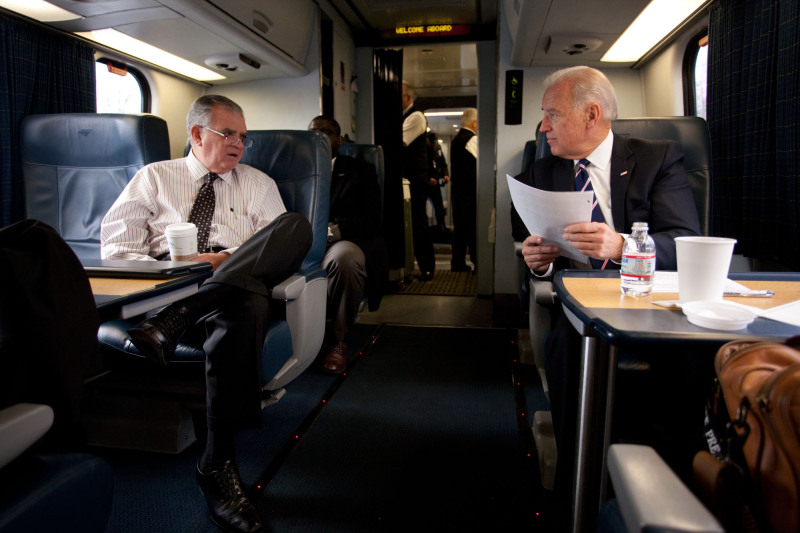Past transportation secretaries Ray LaHood, Anthony Foxx, and Norman Mineta, who served under both Republican and Democratic presidential administrations, have underscored the need for the United States to build, and for California to finish, high-speed rail systems between major cities.
From "High-speed rail is a win-win for America," an editorial co-authored by the three and published Monday in the Chicago Tribune:
...we believe that high-speed rail is the single most effective way to move America’s transportation system into the 21st century. A robust network of high-speed rail corridors with high-performance connections is the most powerful strategy to dramatically reduce climate pollution while reducing traffic congestion and improving intercity travel.
They specifically called out their support for California's project, now under construction, pointing out that when completed it will have the capacity of six highway lanes, 91 airport gates, and two new runways.
Of course, finishing California's project will take billions. And the $4.2 billion needed to finish the 119-mile Central Valley segment, from Bakersfield to Merced, is currently tied up in budget negotiations, thanks to parochial state lawmakers ostensibly attempting to divert the money to their districts in Southern California. However, with some $20-$40 billion possible from Biden's infrastructure bill (and other money soon available) to finish the entire project between L.A. and the Bay Area, arguments for the diversion of the voter-approved funding are becoming increasing untenable.
Regardless, it's a whopping sum. The three esteemed past transportation leaders also addressed the high price tags--it's because the U.S. is paying for nearly a half century of short-changing rail infrastructure. Also from the editorial:
There’s one simple reason we have fallen so far behind the rest of the industrialized world when it comes to high-speed rail. You get what you pay for, and since World War II, Washington has prioritized funding for highways and aviation over passenger rail. Since 1949, Congress has invested over $2 trillion in highways and over $777 billion in aviation. Meanwhile, Congress has provided roughly $100 billion toward passenger rail, with just $8 billion dedicated solely to high-speed rail development, according to a report from the Committee on Transportation and Infrastructure.
As previously reported, the California High-Speed Rail Authority recently completed environmental documents for the section south from Bakersfield into Los Angeles County. If the state legislature can move forward, with strongly signaled support from Washington and a growing consensus that this project must be funded and finished, the timing is right to stop bickering and get it done.
The current Secretary of Transportation, Pete Buttigieg, has also made it clear he supports California's project, saying the U.S. must become "a global leader" in the field.
"Sincere thanks to US DOT Secretaries Anthony Foxx, Ray LaHood and our own Secretary Norm Mineta for sharing their enlightened opinions on the multiple advantages of a high speed rail network for the nation," wrote Rod Diridon, Sr., Co-Chair of the US High Speed Rail Coalition and the namesake of San Jose's railway station, in an email. "This is our opportunity to join the rest of the world in building this clean, fast, safe, and efficient mode of transportation."
Be sure to reach out to California State Assembly Speaker Anthony Rendon, Assembly Transportation Committee Chair Laura Friedman, Senate President Pro Tempore Toni Atkins, and Lena Gonzalez, Chair, Senate Transportation Committee, and demand they approve the full state budget with the voter-approved $4.2 billion for fully electrified, high-speed rail in the Central Valley.






